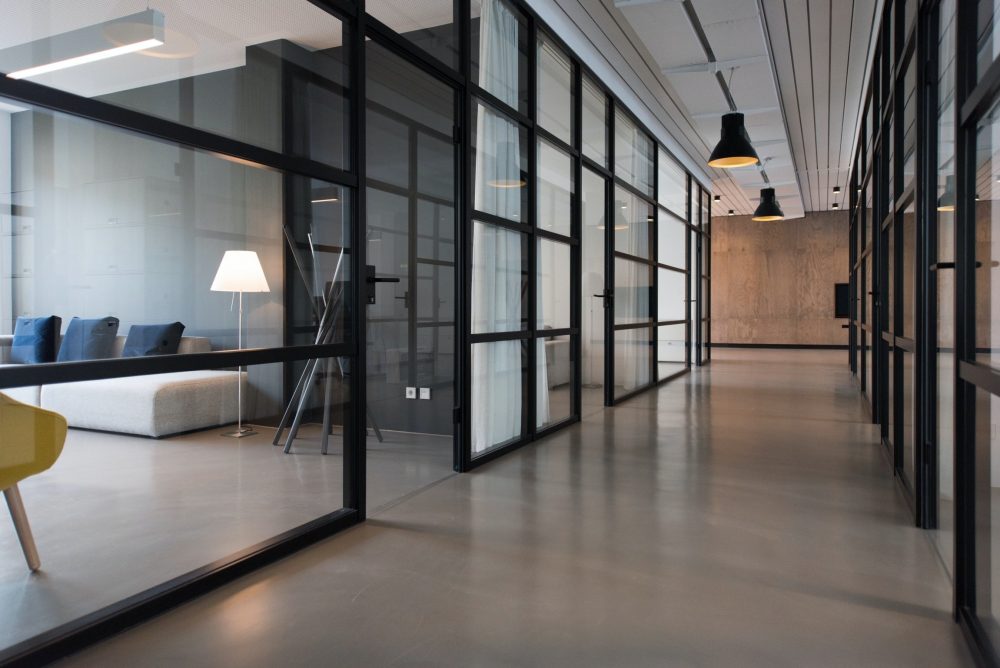Is your building making people sick? The onset of the coronavirus has made the need for healthy buildings and better ventilation a top priority.

This article was originally published by Allwork.
The coronavirus pandemic has come to accelerate several workplace trends. Among them, and a key concern for investors, landlords, CEOs, and employees alike is the need to create healthier workplaces and improve building ventilation. The need for healthier work environments stems not only from the pandemic, but also from the fact that sick building syndrome has become an issue for organizations around the world.
Sick building syndrome “is used to describe a situation in which the occupants of a building experience acute health- or comfort-related effects that seem to be linked directly to the time spent in the building.” Basically, people were finding that they got sick or didn’t feel their best whenever they were in the building, but as soon as they stepped out, all symptoms seemed to go away.
According to the NIH, some of the most common symptoms associated with sick building syndrome include: “headache, dizziness, nausea, eye, nose or throat irritation, dry cough, dry or itching skin, difficulty in concentration, fatigue, sensitivity to odors, hoarseness of voice, allergies, cold, flu-like symptoms, increased incidence of asthma attacks and personality changes.”
With the onset of the coronavirus and as companies prioritize the safe re-entry to the workplace, creating healthier buildings has become a top priority.
As a result, many organizations are now talking about Indoor Environmental Quality (IEQ). A recent Cushman and Wakefield article defined IEQ as “the conditions occupants experience within a building, particularly those related to health and wellbeing, comfort, and productivity.”
The Role of Air Quality in IEQ
Due to the nature of the SARS-CoV-2 virus — as in it causes a respiratory illness — indoor air quality is now drawing more attention than ever. The way air circulates in built environments has proven to have a direct impact on the transmission of airborne pollutants and illnesses, such as the flu, the common cold, and the coronavirus.
In fact, the NIH claims that the symptoms of diagnosable illness in building-related diseases are attributed directly to airborne building contaminants.
To create healthier buildings and healthier workplace environments, we need to prioritize indoor air quality.
3 Effective Ways to Improve Indoor Air Quality
According to the US Environmental Protection Agency (EPA), there are three basic strategies to improve indoor air quality:
- Source control
- Improved ventilation
- Air cleaners.
1. Source Control
This strategy focuses on eliminating individual sources of pollution within a built environment; it is also the most cost-efficient approach to protecting indoor air quality.
Some sources of pollution (like asbestos) can be sealed or enclosed; others, like gas stoves can be adjusted to decrease the amount of emissions. Below is a list of air pollution sources in indoor environments:
- Asbestos
- Biological pollutants
- Carbon monoxide
- Formaldehyde/pressed wood products
- Lead (Pb)
- Nitrogen dioxide
- Pesticides
- Radon
- Indoor particulate matter
- Secondhand smoke/environmental tobacco smoke
- Sotvs, heaters, fireplaces, and chimneys
- Volatile organic compounds.
Click here to learn more about each pollution source and how to control them in indoor environments.
In many cases, you will find that to decrease the amount of emissions you will need to focus on improving your overall building ventilation.
2. Improved Ventilation
Improved ventilation can help lower the concentrations of air pollutants. One of the best ways to improve ventilation is simply to crack a window open and let some fresh air inside. Fresh air can enter a built environment through windows and doors; through mechanical means; and through infiltration.
For buildings, the most likely scenario is to have a great mechanical ventilation system in place, as opening windows and doors might not always be possible. Bear in mind that many mechanical HVAC systems are no longer fully fit for newer standards, so it’s important that you check your HVAC system to ensure it’s up to date, up to standards, and well-maintained.
According to the EPA, “increasing ventilation with all or mostly outside air may not always be possible or practical. In such cases, the effective rate of ventilation per person can also be increased by limiting the number of people present in the building in general, or in specific rooms.”
3. Air Cleaners
The most important thing to know about air cleaners is that “the effectiveness of an air cleaner depends on how well it collects pollutants from indoor air (expressed as a percentage efficiency rate) and how much air it draws through the cleaning or filtering element (expressed in cubic feet per minute).”
A key factor to ensuring the effectiveness and proper functioning of an air cleaner is to ensure that it is regularly maintained.
For commercial buildings, the EPA recommends the use of portable air cleaners to supplement increased HVAC system ventilation and filtration. According to the EPA, “directing the airflow so that it does not blow directly from one person to another reduces the potential spread of droplets that may contain infectious viruses.”
Bear in mind that air cleaning in and out of itself is not enough. It needs to be used in conjunction with ventilation systems in order to truly improve air quality.
“The use of air cleaners alone cannot ensure adequate air quality, particularly where significant pollutant sources are present and ventilation is insufficient.”
A note on plants: Though the EPA argues that there is no evidence that shows that plants remove significant quantities of pollutants in offices, plants can help purify the air in small quantities and they can also provide other well-being advantages. Check out the 7 best, low maintenance plants for the workplace and the best plants for the home office here.

